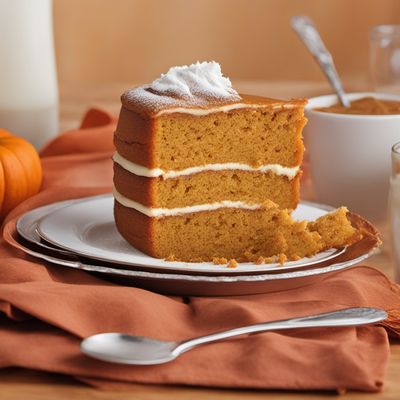
Dish
Tikvenjak
The mixture of grated pumpkin, sugar, and flour is baked until it is golden brown and crispy. The dish is typically served hot, with a side of whipped cream or ice cream. Tikvenjak is not suitable for those who are allergic to pumpkin or have a gluten intolerance. It is also high in sugar and should be consumed in moderation.
Origins and history
Tikvenjak is believed to have originated in the region of Dalmatia, which is located in the southern part of Croatia. It has been a popular dish in the region for centuries and is often served during religious festivals and celebrations. The name "Tikvenjak" is thought to have come from the Croatian word "tikva," which means "pumpkin."
Dietary considerations
Not suitable for those who are allergic to pumpkin or have a gluten intolerance. It is also high in sugar and should be consumed in moderation.
Variations
There are many variations of Tikvenjak, including those that are filled with nuts or other fruits. Some recipes also call for the addition of cinnamon or other spices to the mixture.
Presentation and garnishing
To ensure that the dish is crispy and golden brown, it is important to bake it at a high temperature for a short amount of time. The mixture should be creamy and smooth, with no lumps or graininess. It is also important to use fresh pumpkin for the dish, as this will give it a rich and sweet flavor. Tikvenjak is traditionally served on a large platter or dish, with a dusting of powdered sugar on top. It can also be garnished with a sprig of fresh mint or a slice of lemon.
Tips & Tricks
If you want to make a healthier version of Tikvenjak, you can substitute some of the sugar with honey or maple syrup. You can also use almond flour instead of regular flour to make it gluten-free.
Side-dishes
Tikvenjak is typically served on its own as a dessert, but it can also be paired with a side of whipped cream or ice cream.
Drink pairings
Tikvenjak pairs well with coffee or tea.
Delicious Tikvenjak recipes
More dishes from this category... Browse all »

Anpan
Japanese cuisine

Antakya künefesi
Turkish cuisine

Apfelstrudel
Austrian cuisine

Appelflap
Dutch cuisine

Apple Cider Doughnut
American cuisine

Asabi
Lebanese cuisine

Asawer
Lebanese cuisine

Athirasa
Sri Lankan cuisine
More cuisines from this region... Browse all »

Albanian cuisine
Savory, Herbaceous, Tangy, Citrusy

Aromanian cuisine
Savory, Herbaceous, Tangy, Citrusy

Croatian cuisine
Fresh, Simple, Light, Tangy

Greek cuisine
Fresh, Flavorful, Tangy, Salty

Kosovan cuisine
Hearty, Flavorful, Herbaceous, Spicy, Tangy

Macedonian cuisine
Savory, Hearty, Spicy, Tangy, Rich

Montenegrin cuisine
Fresh, Light, Tangy, Savory

Serbian cuisine
Savory, Hearty, Spicy, Tangy, Rich

